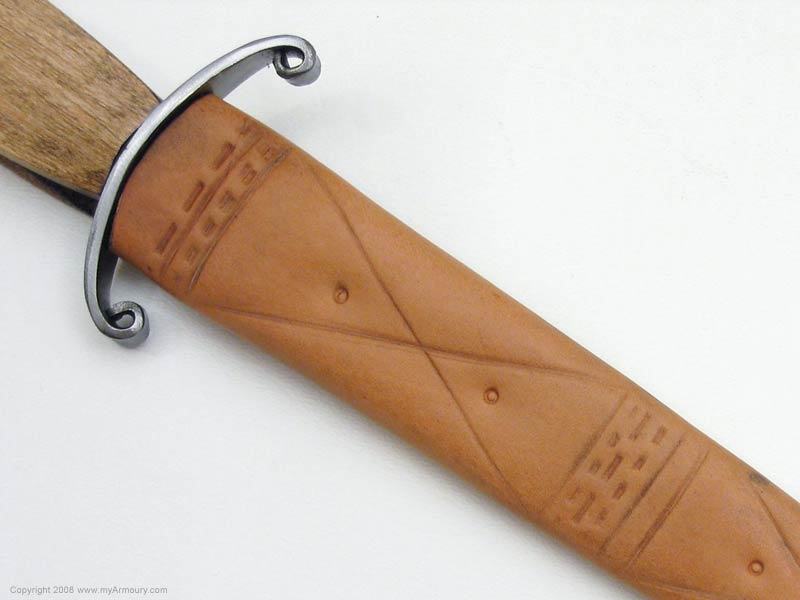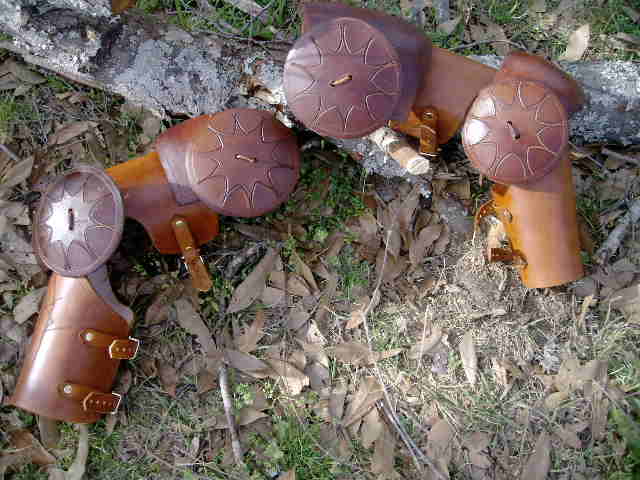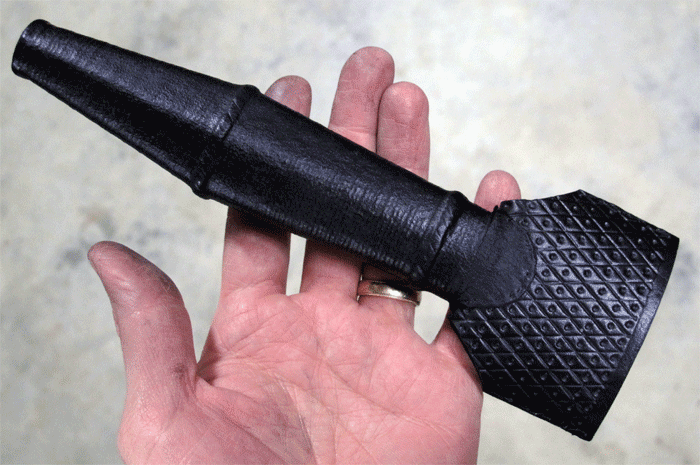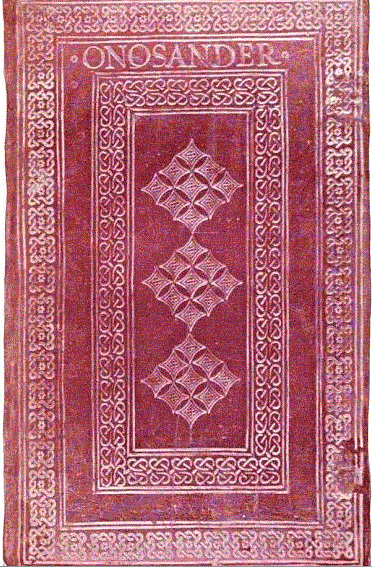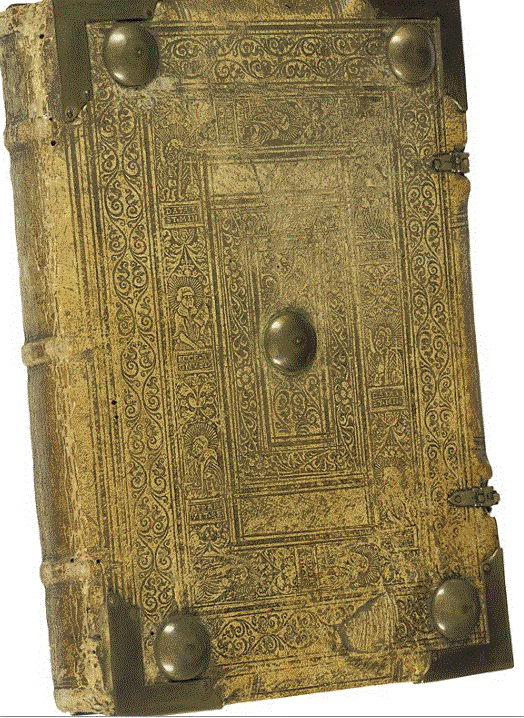Craig and Tod have pretty much covered it, but I thought I'd add one more point and elaborate a bit on "wet" v.s. "damp" since moisture content of the leather is critical to making the decoration crisp and permanent.
I've seen a lot of "medieval" items people have made and then covered in modern tooling and it invariably Just Looks Wrong. Modern western floral carving is very very different to the vast majority of decoration you see on medieval artefacts and the majority of the tools used in modern tooling aren't much good for reproducing a good medieval look and feel. I use modern backgrounders occasionally but I won't touch a medieval job with a swivel knife and beveller. The vast majority of what I do I do with a scratch awl, a bone folder and a few stamps I made from old nails and with that I can get things that look 'right' compared to originals.
Scissor case:
[ Linked Image ]
Knife sheath - the 'vine' of the leafwork is all wrong, I was experimenting with a different tool. I've been meaning to remake this for about 4 years now.
[ Linked Image ]
Moisture content:
Leatherworkers call the process 'casing' the leather. What you want is enough moisture in the leather that it will take and hold the impression and - ideally - slightly darken in the compressed areas, but not so much that it is excessively floppy. Excessive moisture will mean the leather will get damaged by the tools and tear more easily as well as not taking impressions as well as it could.
When I made my decorated
knife sheath I did the scraped areas with the leather dry. I just used a scratch awl (straight, round bladed, slightly pointed awl used for marking leather) to do the decoration. I did the back with a ball-point scriber after wiping the leather with a damp cloth.
When I did the
scissor case which has a bit more coverage of stamped decoration on it I soaked the leather in slightly lukewarm (never hot!) water until bubbles stopped coming out of the flesh (fuzzy) side of the leather, then took it out of the water, wiped it off with a towel and wrapped it in clean newspaper then left it over night.
When I unwrapped it it was back to its normal colour but it was cool to the touch. That's a state bootmakers refer to as 'mellow' and I've found it's the best moisture content for this sort of decoration. Lines and stamps take well into the leather and you get a good darkening of the stamped area. It's not terribly forgiving though, so practice a lot before you tackle something big.
The other thing to note is that different parts of the hide will take decoration in different ways. The leather has to have a decent consistency and firmness to take decoration. It may be tempting to use belly scraps to practice on because they're cheap but belly leather is flabby and loose and not good for decorating.
